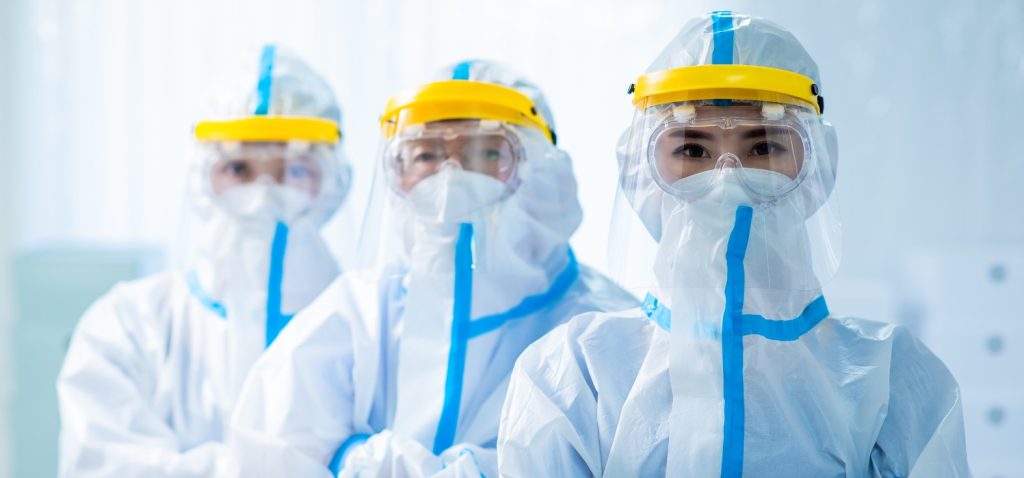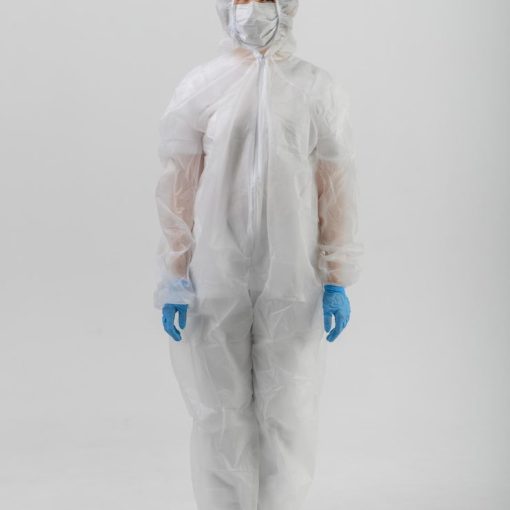Have you ever wondered what keeps doctors, nurses, and healthcare workers safe while they care for others? In a hospital or clinic, danger isn’t always visible. Germs, viruses, and bodily fluids can spread easily.

This is where medical protective gear plays a life-saving role. It’s not just a uniform, it’s a shield that helps protect both healthcare workers and patients every single day.
Why Quality Medical Protective Gear Matters
When you walk into a hospital, you might notice masks, gloves, gowns, and face shields. These are all part of protective safety gear. They may look simple, but the quality of this gear can make a huge difference in preventing infections. If protective clothing is weak, tears easily, or doesn’t fit properly, it can put lives at risk.
Think about it: if a nurse is wearing a low-quality gown that lets fluids soak through, that’s an open door for harmful bacteria or viruses. Quality gear, on the other hand, creates a reliable barrier. It gives you confidence that you are protected while doing your job.
Protecting Healthcare Workers Every Day
Healthcare workers are exposed to risks daily, sometimes without even realising it. From emergency rooms to dental clinics, medical staff come into contact with blood, saliva, and other body fluids. Medical protective clothing, such as gloves, gowns, masks, and face shields, helps reduce exposure and keeps infections under control.
For example:
- Gloves protect your hands from direct contact with harmful substances.
- Gowns cover your clothes and skin, stopping fluid from reaching you.
- Masks and face shields protect your nose, mouth, and eyes from airborne particles.
By wearing proper medical protective gear, healthcare workers can safely focus on treating patients without constantly worrying about their own health.
Preventing the Spread of Infections
One of the biggest reasons for using medical protective gear is infection control. In healthcare settings, infections can spread quickly if proper safety steps aren’t followed. Protective gear works as a barrier between the healthcare worker, the patient, and the surrounding environment.
For example, during surgeries or wound care, protective clothing prevents bacteria from entering the patient’s body. At the same time, it stops blood or fluids from touching the healthcare worker’s skin. This two-way protection helps reduce cross-contamination and keeps everyone safer.
The Role of Medical Protective Clothing in Different Situations
Not all healthcare tasks are the same. Some jobs need basic protection, while others require advanced gear. For example:
- Routine checkups may only need gloves and masks.
- Surgical procedures require gowns, gloves, masks, and face shields.
- Handling hazardous materials may need full-body suits and respirators.
Good medical protective clothing ensures the right level of protection for each situation. It allows healthcare workers to choose what they need without compromising on safety.
Comfort and Fit Matter Too
Protection is important, but so is comfort. Imagine wearing a gown that’s too tight, or a mask that makes it hard to breathe. If you feel uncomfortable, you might adjust your gear too often or remove it at the wrong time. That can increase the risk of exposure.
High-quality protective gear is designed to fit well and let you move comfortably. It should be easy to wear for long shifts without causing irritation. When gear is both protective and comfortable, you can do your job better and with more confidence.
Supporting Patient Safety
It’s not just about protecting healthcare workers. Patients benefit from protective safety gear too. When medical staff wear proper clothing and gear, the chances of transferring infections from one patient to another go down. This is especially important for patients with weak immune systems, such as the elderly, newborns, or those recovering from surgery.
By using good protective gear, healthcare facilities show that they care about patient safety. It helps build trust between patients and medical staff. After all, no one wants to worry about getting an infection during a hospital visit.
Choosing the Right Protective Safety Gear
When selecting protective gear, it’s important to look for:
- Proper certification and quality standards
- Durability and resistance to fluids
- Good fit and comfort
- Ease of use and removal
- Compatibility with other protective items
Whether you’re a healthcare worker, facility manager, or caregiver, choosing reliable medical protective clothing should be a top priority. The right gear not only keeps you safe but also improves the overall quality of healthcare.
Conclusion: Protect What Matters Most
At the end of the day, medical protective gear is about more than just following rules. It’s about protecting lives, yours, your colleagues’, and your patients’. High-quality gear provides the confidence to work in challenging environments while reducing the risk of infections and exposure.
If you’re looking for trusted, durable, and comfortable protective gear, Livingstone International has a wide range of medical protective clothing and protective safety gear designed for all healthcare needs. Choosing the right gear today can make all the difference tomorrow.




